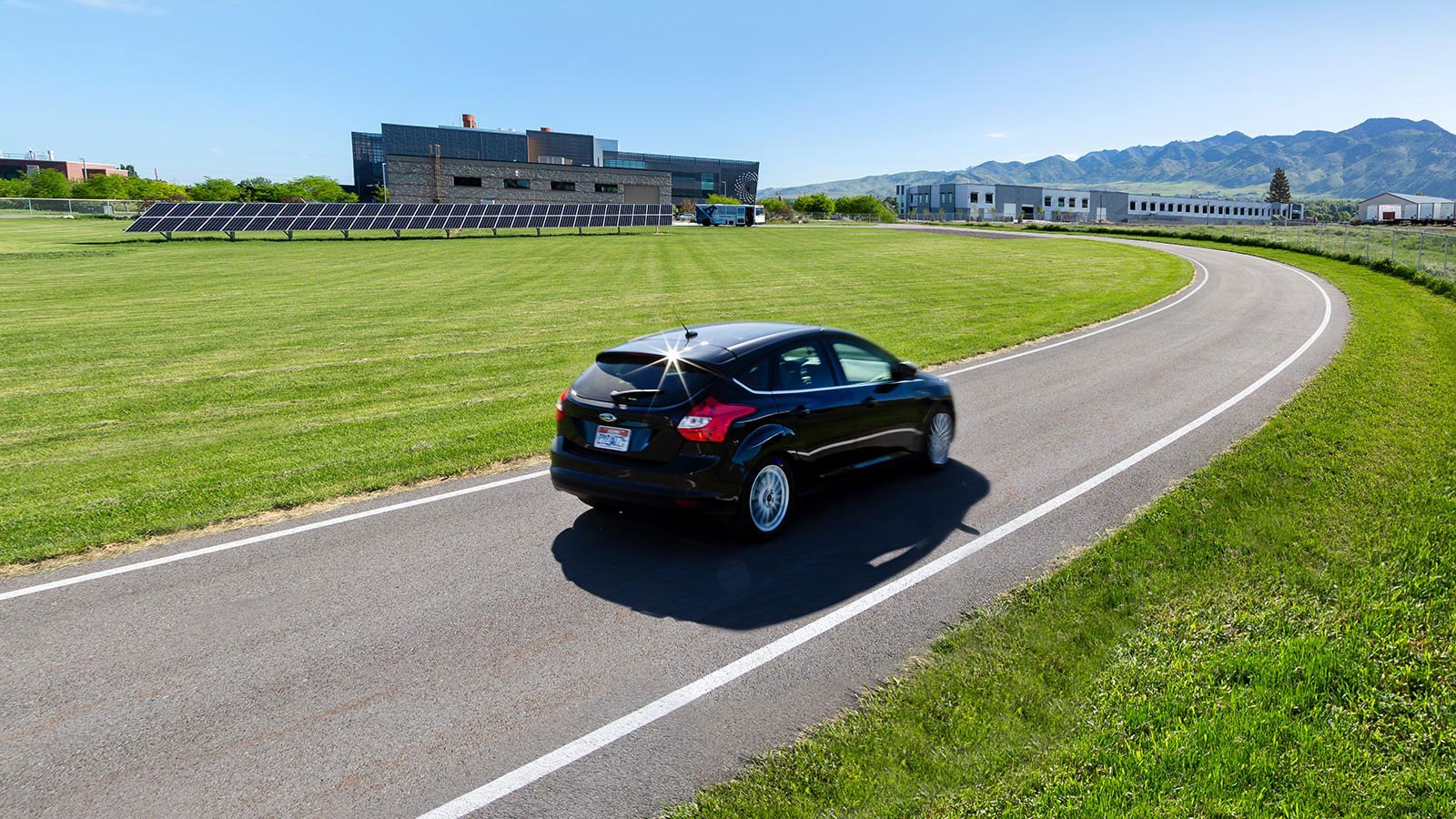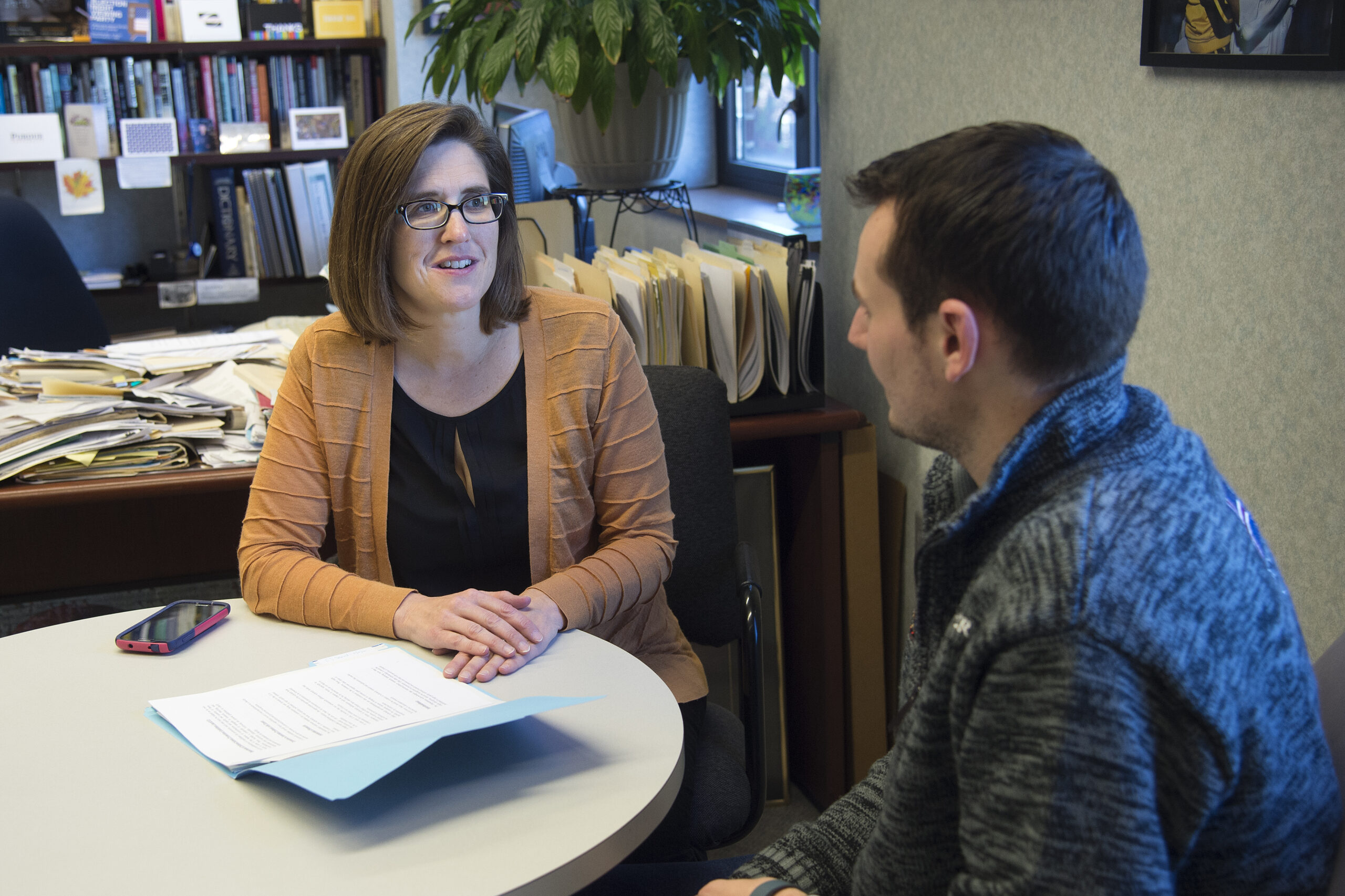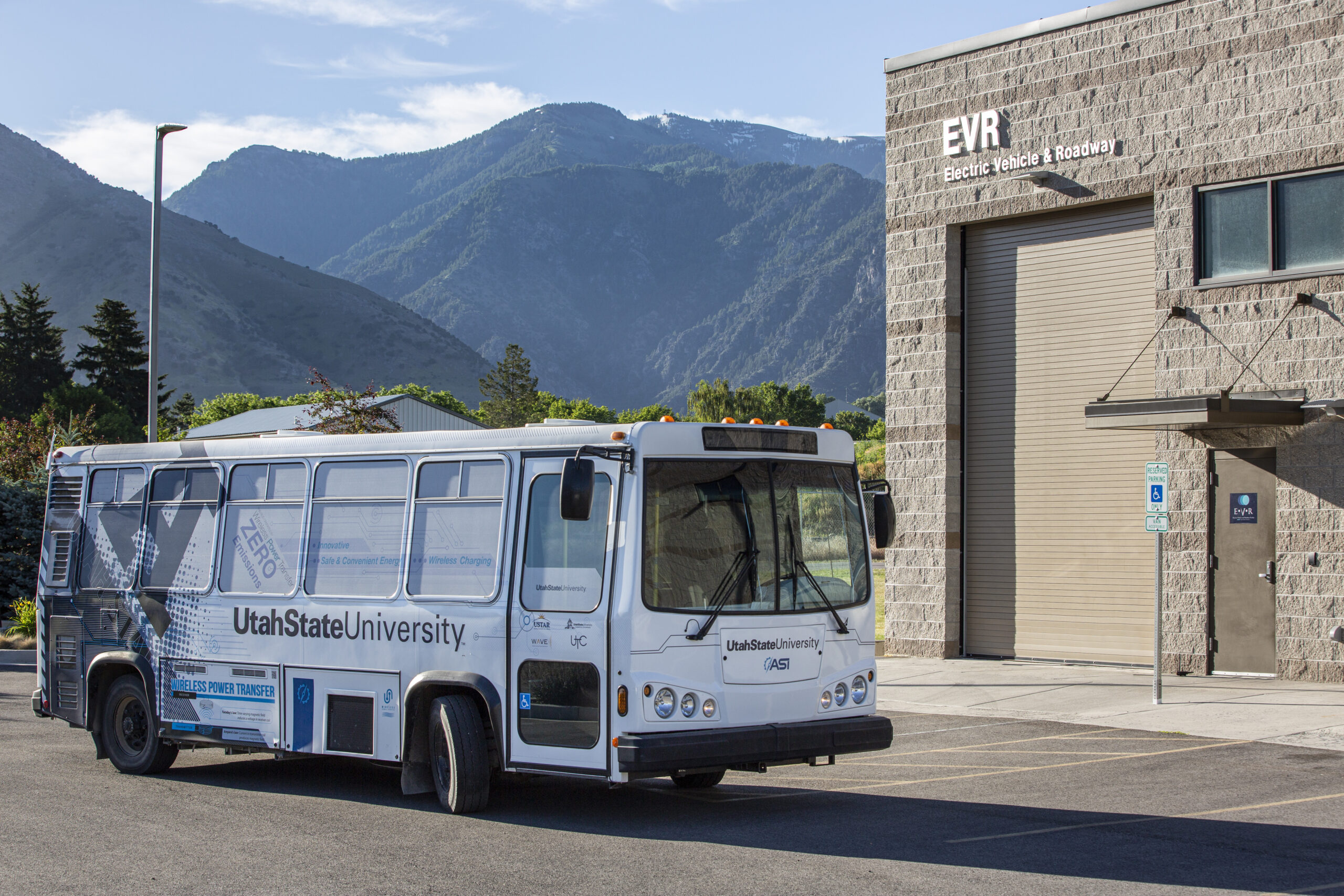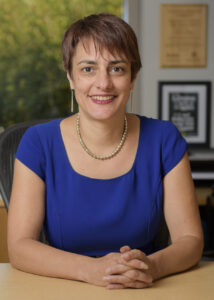Rethinking electric transportation
Faculty members’ grant-winning research team could make electric transportation a more viable option for millions

Rosalee Clawson and her cohorts do not simply want to encourage electric vehicle (EV) usage. The team of scholars’ goal is more ambitious than that.
They want to electrify the roads themselves, thereby making EVs a practical and affordable option for many more citizens.
Clawson, a professor in the Department of Political Science, is a member of the ASPIRE (Advancing Sustainability through Powered Infrastructure for Roadway Electrification) research team that the National Science Foundation (NSF) recently awarded a five-year, $26 million grant, renewable for up to 10 years and $50 million.
The multidisciplinary group of academic and industry partners’ goal is to expand EV adoption – most notably by embedding wireless charging technology in roadways. That would allow properly equipped vehicles to recharge their batteries simply by driving. The project could have massive economic, transportation, energy, and environmental implications.
“It really is a huge undertaking, both in terms of getting the technology where it needs to be, but also in terms of getting policymakers to catch up with where we need them to be to think about the investments needed for ubiquitous charging,” said Clawson, who is serving as the project’s director of diversity and inclusion. “We’re focused on changing public attitudes, as well, so that more people are buying electric vehicles, and making it affordable for them to buy electric vehicles. We don’t want this just to be the Elon Musks of the world driving their Teslas; we want this to be something that’s serving individuals across the board.”

Headquartered at Utah State University, the ASPIRE Engineering Research Center (ERC) will operate in strategic partnership with Purdue, University of Colorado Boulder, University of Texas at El Paso, and University of Auckland in New Zealand. Researchers at Colorado State University, University of Colorado Colorado Springs, Virginia Polytechnic Institute and State University, Cornell University, and four national laboratories are also involved, forming the team that in recent years has studied the issue under the leadership of Utah State project director Regan Zane.
The researchers recognized that in order for their program to identify achievable solutions – much less to receive the NSF’s seal of approval – they would need to develop valuable partnerships across a range of industries. When the NSF announced the ERC’s creation on Aug. 4, the group had already established 45 such partnerships, gaining input from automakers Ford and Toyota, Cummins engines, Hyster-Yale forklifts, Kenworth on road test tracks, and John Deere on medium and heavy-duty trucks. Also on board were utilities like Duke Energy and Rocky Mountain Power, plus multiple state departments of transportation and the Ohio Turnpike.
“A really important part is that we have industry partners involved so that it’s not just a bunch of green, sustainability-focused researchers,” Clawson said. “We also have all these industry folks who are investing a lot of money in the technology for electric vehicles.
“We have them as partners on the grant, and that was an important part of the NSF review process: to show that we had industry support. I think that’s really critical because the legislators will pay more attention when you have industry segments behind you saying, ‘Yeah, this is the way we want to go.’”
Environmental impact

Clawson cited this year’s efforts by state leaders in Utah to expand the electrified transportation research already under way at Utah State. Recognizing the project’s potential impact on the state’s air quality, Utah committed $3 million to support the team in its pursuit of the NSF grant.
“Utah may not be the first state that comes to mind when you think about the environment, but the state’s legislators really do care about sustainability and public health issues,” Clawson said. “They’ve had problems with smog, problems with air pollution, and so they may not go around talking about climate change, but they are going to say, ‘Oh wow, this is the way to clean up the air. This is the way to get rid of emissions and make Utah a beautiful place where people want to come and live and be outside.”
These vehicle emissions are particularly harmful in communities that border major roadways, where near-road exposure to pollutants can create significant public-health issues.
“If we can change that, we can improve quality of life and we can have a global impact on greenhouse gas emissions and economic development,” said Nadia Gkritza, director of Purdue’s ASPIRE team and professor of civil engineering and agricultural and biological engineering.
Adding to the project’s environmental justice component is the reality that populations along major roadways often skew along race and income lines, said Donna Riley, Kamyar Haghighi Head of the School of Engineering Education and leader of ASPIRE’s engineering workforce development efforts.
Reducing exposure to particulate pollution along roadways could improve public health within these communities – not to mention the impact infrastructural changes would have on efforts to combat climate change.
“I think in 10 years, we will see that the energy industry has shifted into a major investment in renewables, and we can then see our way out of the climate problem because we’ve made those investments,” Riley said. “That’s what I see as the big game-changer.”
Key issues
Overhauling American road infrastructure and decarbonizing the grid is a noble objective, but the team must find solutions to a range of concerns if they are to meet their ultimate goals:Affordability and convenience: Arguably the most important hurdle the research team must clear is to propose solutions that will be cost-effective.
Most electric vehicles are still relatively expensive, which is perhaps the No. 1 factor in consumers’ sluggish adoption of electric transportation to this point. The least expensive EV models carry an MSRP of roughly $30,000, while others cost well into six figures.
“For our team, the price point does really matter in getting it to the point where it’s not just an elite few who can drive electric vehicles, but that it’s something that can be adopted more widely,” Clawson said.


Embedding the necessary charging capabilities in roadways and parking facilities would also carry a hefty price tag. But these investments are likely essential if the research team’s proposals are to ultimately succeed.
Some EV models currently travel as few as 100-150 miles on a full battery charge, after all, and the combination of expense and range anxiety prevents many consumers from even considering an EV.
“Present-day solutions for public charging, particularly fast charging, are estimated to cost light-duty EV owners up to three times more than the range equivalent for an internal combustion engine vehicle when accounting for capital costs and high utility demand charges,” Gkritza said. “These costs must come down significantly for widespread adoption to occur. This is an area that the center will work on to provide affordable and equitably access to this technology and its benefits.”
Vehicle purpose: Traditional private transportation is not the team’s only consideration here, either. Researchers will develop a range of wired and wireless solutions for drivers in both rural and urban settings, as well as for commercial and public transportation.
“We are looking specifically at what would make from plain consumers to fleet operators to heavy-duty vehicle operators actually decide to electrify their fleet and adopt this technology,” said Gkritza, who is co-leading ASPIRE’s adoption research efforts.
In addition to the potential environmental benefits of electrified public transportation and commercial trucking, Riley pointed out that it could also improve efficiency within the trucking industry since it would eliminate the need to stop and refuel.
“There’s a lot of other questions about what happens with public transit if we can electrify our buses in the same way. How does that work?” Riley said. “And if we can do this with long-haul, 18-wheel trucks, then that changes a lot about how we move goods around the country.”
Policy: The researchers believe they are launching the project at an opportune time. Tesla’s emergence increased visibility for EVs, plus the national transportation and electric utility infrastructure needs extensive repair.
Legislators will have the chance to endorse upgrades that could benefit multiple generations to come.
“There are a lot of opportunities now as states will need to rehabilitate their infrastructure,” Gkritza said. “It would be much more cost effective if they incorporate the dynamic charging technology in the pavement at the same time.”
Former interim director of the Purdue Policy Research Institute, Clawson’s policy background and interest in transportation made her a natural fit for the ASPIRE team. She said that the researchers must strategically address a range of audiences to generate the necessary momentum behind their project.
“It’s a multi-factor solution,” Clawson said. “You have to influence citizens and try to get them to demand electric cars and more charging, you’ve got to get legislators on board, you need interest groups working, and you need media coverage that frames it in an appropriate way.”
Purdue involvement
Gkritza, Clawson, and Riley are all members of ASPIRE’s executive leadership team, as is Steve Pekarek, an electrical and computer engineering professor who leads the power thrust team. Engineering faculty members Dionysios Aliprantis, Darcy Bullock, and John Haddock are also involved, along with a group of undergraduate and graduate research assistants – including Clawson’s first addition to the team: political science graduate student Ky’La Sims.As ASPIRE’s diversity and inclusion leader, Clawson works to ensure that the involved faculty, students, and industry partners emphasize these considerations in their decision making and research.
“One example is with electrification,” Clawson said. “If you think about electrifying roads or putting into place charging stations, oftentimes this infrastructure gets built in wealthier neighborhoods – often White neighborhoods – and so what we really want to do as a team is make sure that these kinds of diversity issues are taken into account as engineers are thinking about the technical side of it and as we’re working with policymakers to implement the kinds of policies that we need to have ubiquitous charging.”
Making the world a better place
Riley described ASPIRE’s collection of academic and industry partners as a “dream team” of “the best people that have been exploring different aspects of this problem for a very long time.”
She added that it benefits ASPIRE to have partners spread across the country. This way, the team will gain a more accurate understanding of the transportation issues affecting communities in different geographic regions and urban or rural settings.
“We can really find out what those local impacts are going to be of this infrastructure,” Riley said. “The infrastructure is happening nationally, but the impacts are felt locally. So, by having this distributed network of people, we can really gain a lot of insight.”
Just as the ASPIRE project is still in its infancy, adoption of electric vehicles is still very much in the early stages among American consumers. However, Riley believes the group’s goals are “totally doable” within the 10-year period that ASPIRE could receive NSF funding before achieving graduated status and continuing as a self-sustaining research center.
If her projection proves correct, the researchers will have developed solutions that not only redefine transportation in the 21st century, they will have driven environmental changes that improve quality of life for countless Americans.
“This isn’t just about the technology,” Clawson said. “It is also about how we can make the world a better place.”